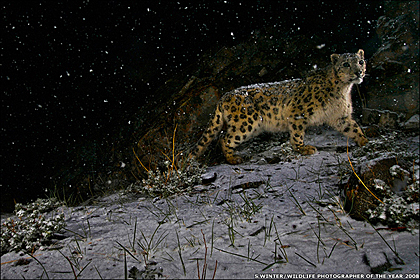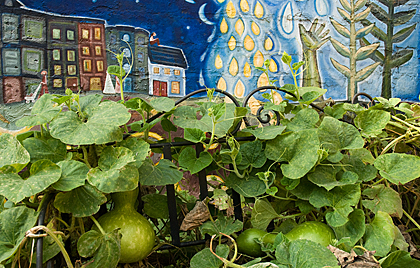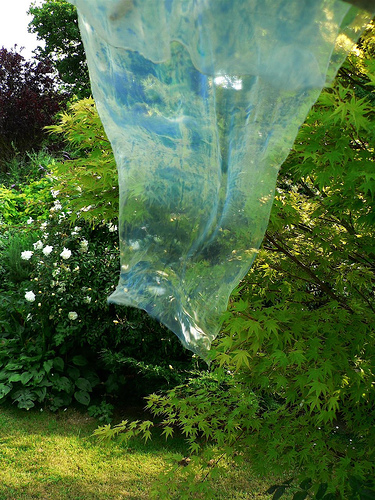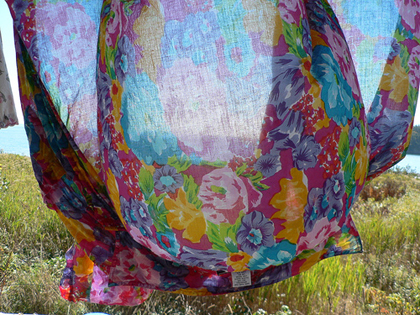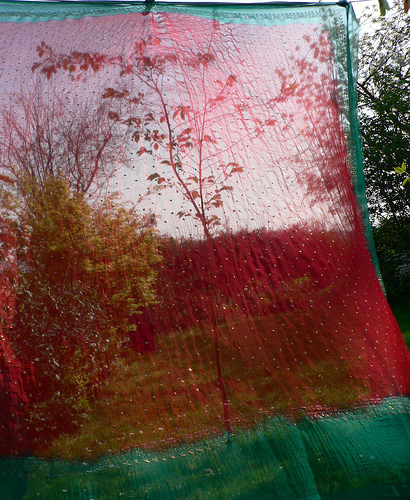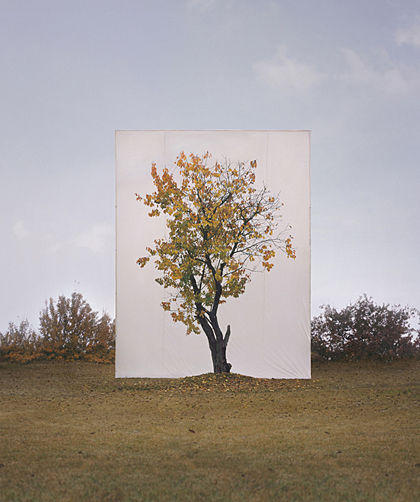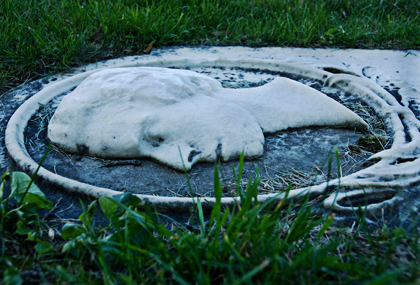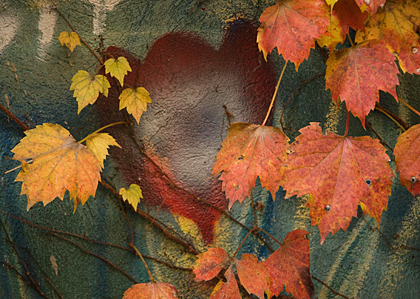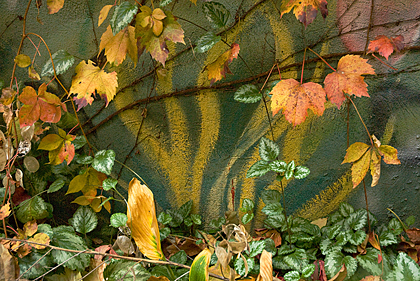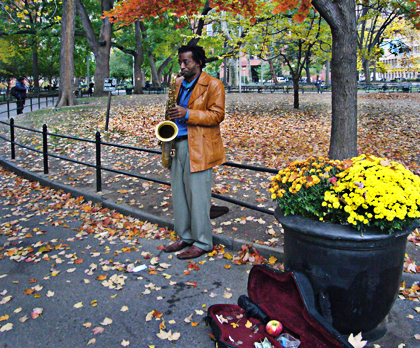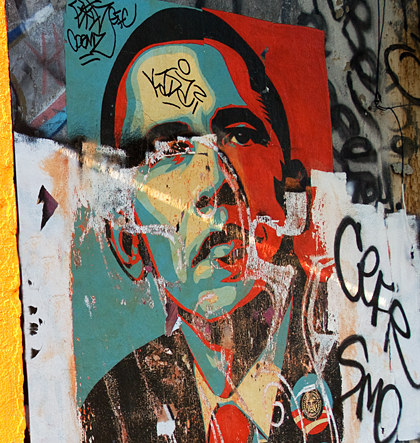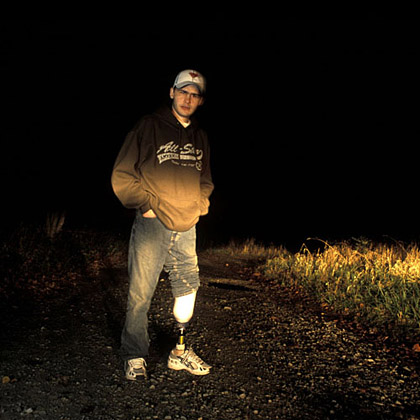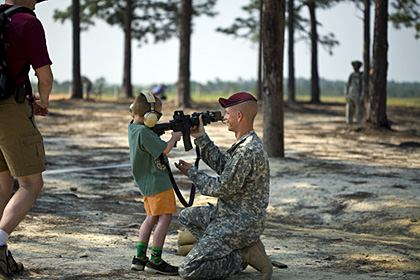
"Park man, E 21st garage," Tim Connor, All rights reserved
In my daily life in the city I shoot any number of long-term projects simultaneously. The subjects interest me, though I don't necessarily know why. The subjects are always there. When I don't have the right camera, I check them out as pictures anyway. Urban trees, pocket parks, community gardens, little urban front yards, bright colors in drab places, spotlights of sunlight, shadows, dapple, foliage & stone, rooftops, doors, stoops, all statues, murals, unloved places that fill up with things, weeds & brush, seasonal decorations of all kinds, billboards, bodegas, botanicas, madonnas, saints, toy stores, dogs & people, kids playing sports, people making music, neighborhood celebrations...
This shot is from a series of portraits of people whose job it is to hand out stuff or wear signs on the street. Some days I don't have the courage to ask for their permission to shoot ( I tell myself I don't have the time). But at least I no longer give myself the excuse of not having a camera. I always carry my teenycam (Panasonic Lumix digital) in a holster on my belt. The whole session -- 2 - 10 snaps -- is over in maybe 2 minutes. If they want to see, I show them on the display .
I'm always excited to see the results myself. I always think I'm going to like pictures of people, but 99% disappoint me. I'm trying to develop a better attitude about taking pictures of people. I'm trying to feel less responsible for pleasing them. The nice thing about the hand out guys is they don't expect anybody to please them. They're generally grateful or at least amused by the distraction. Standing out there hour after hour, they must sometimes wonder if anybody sees them at all.
